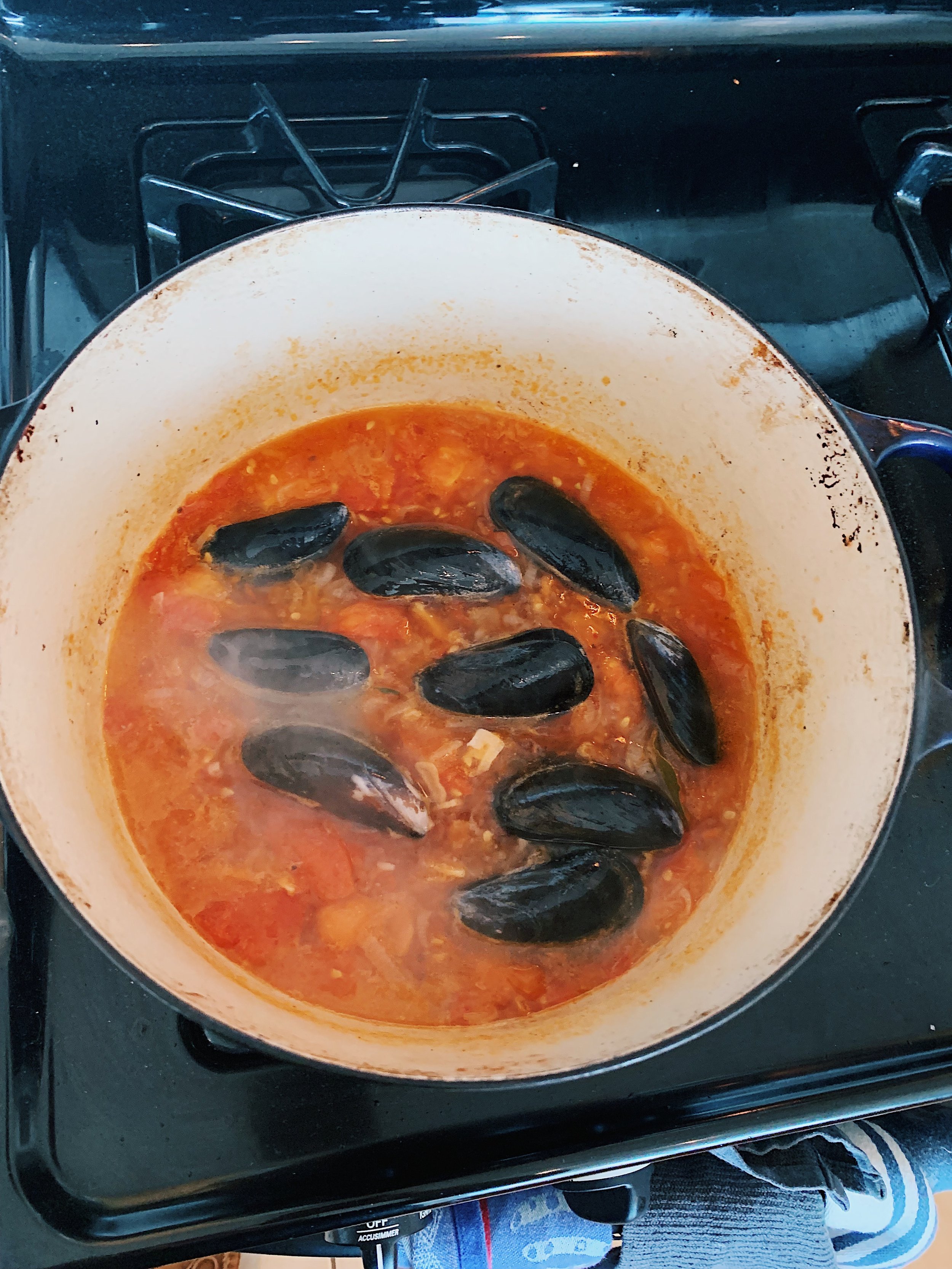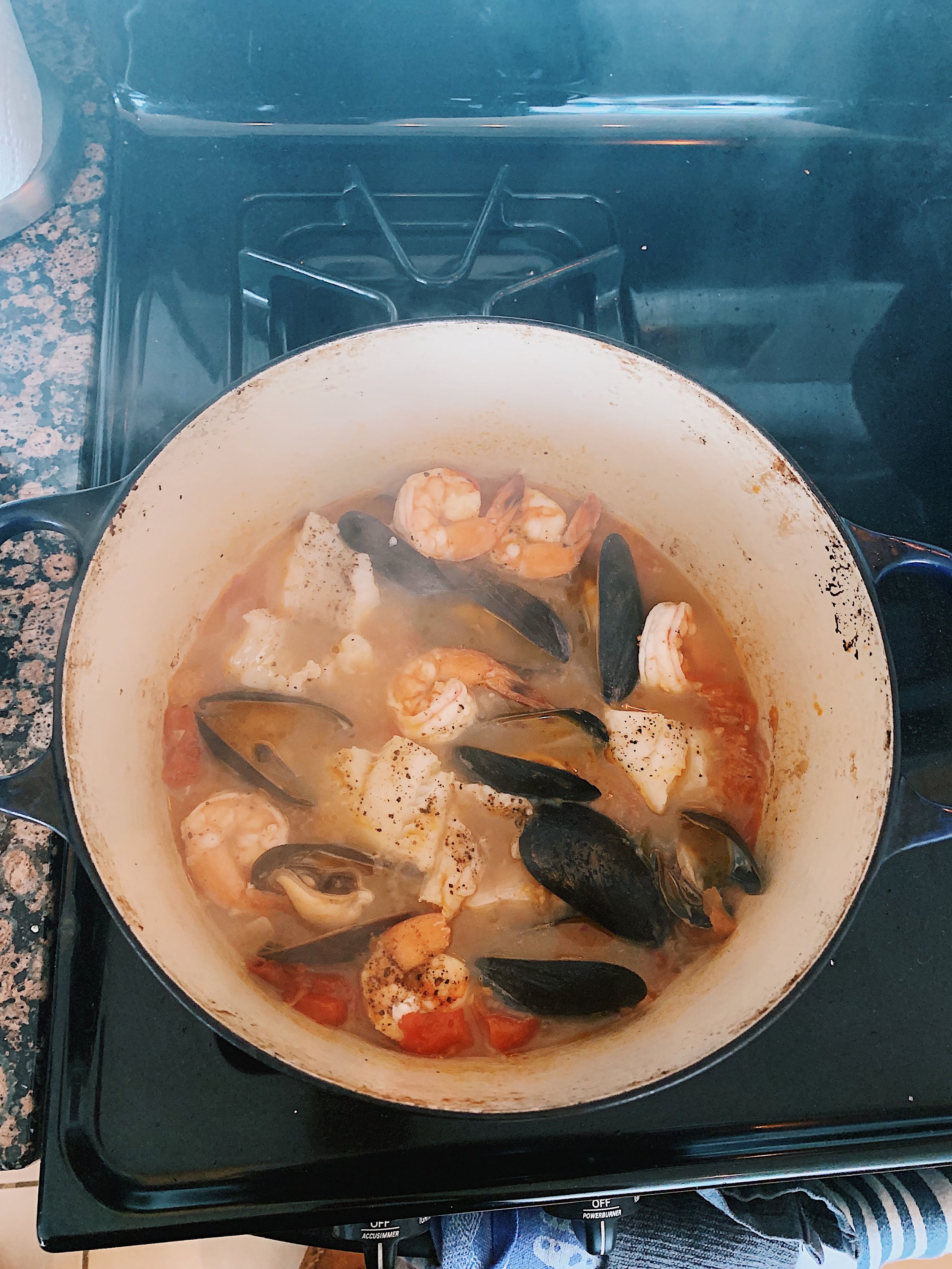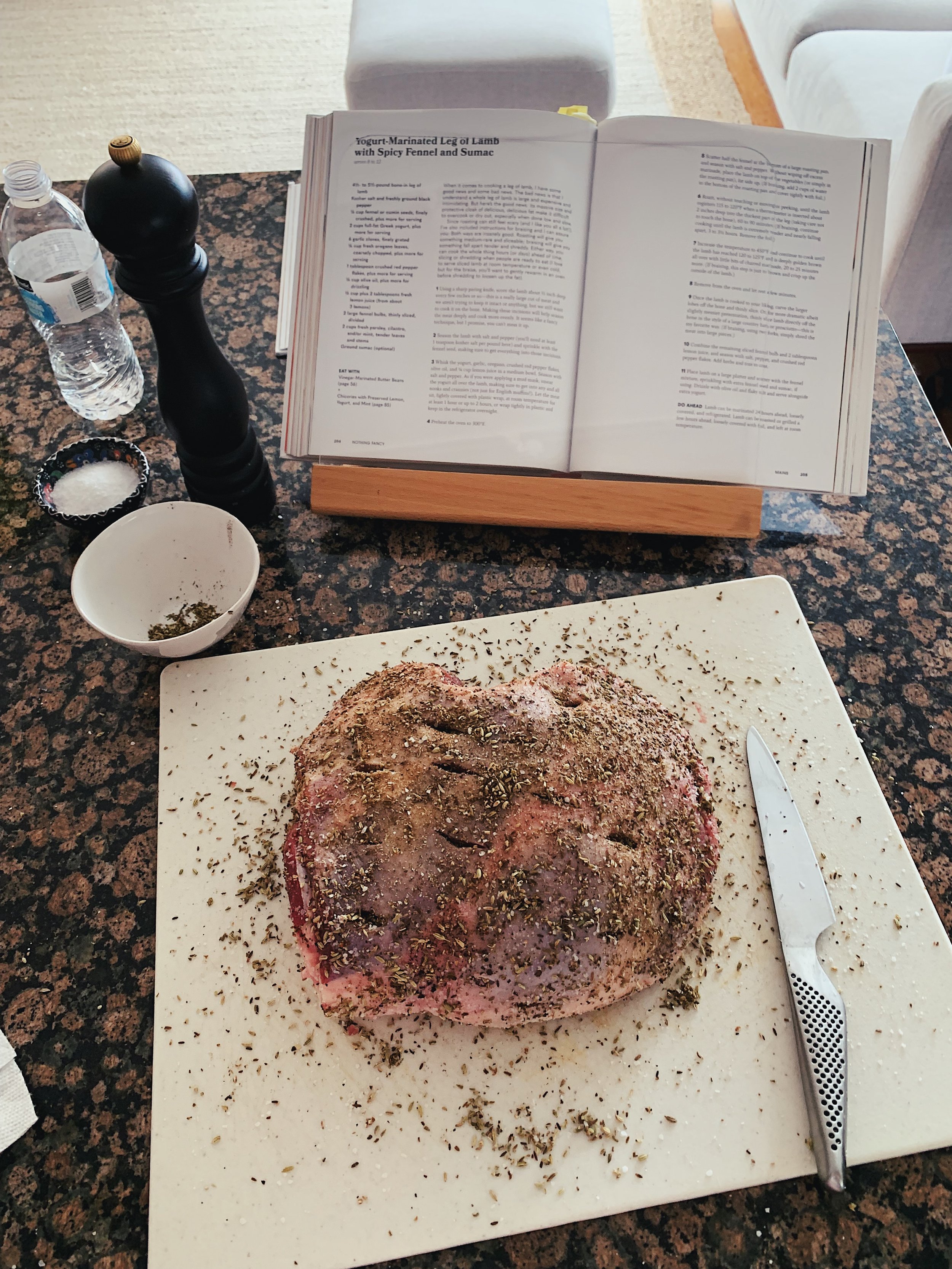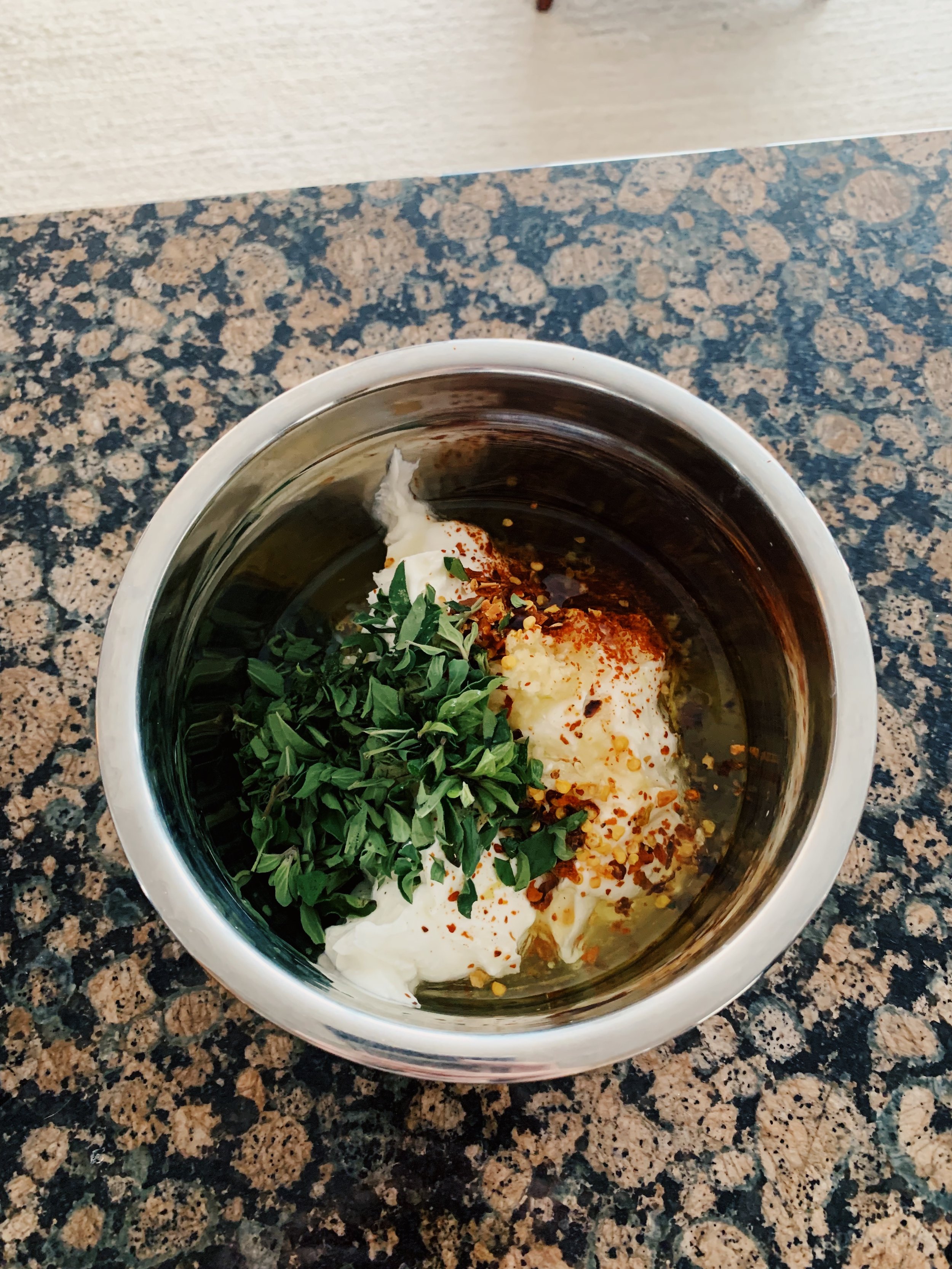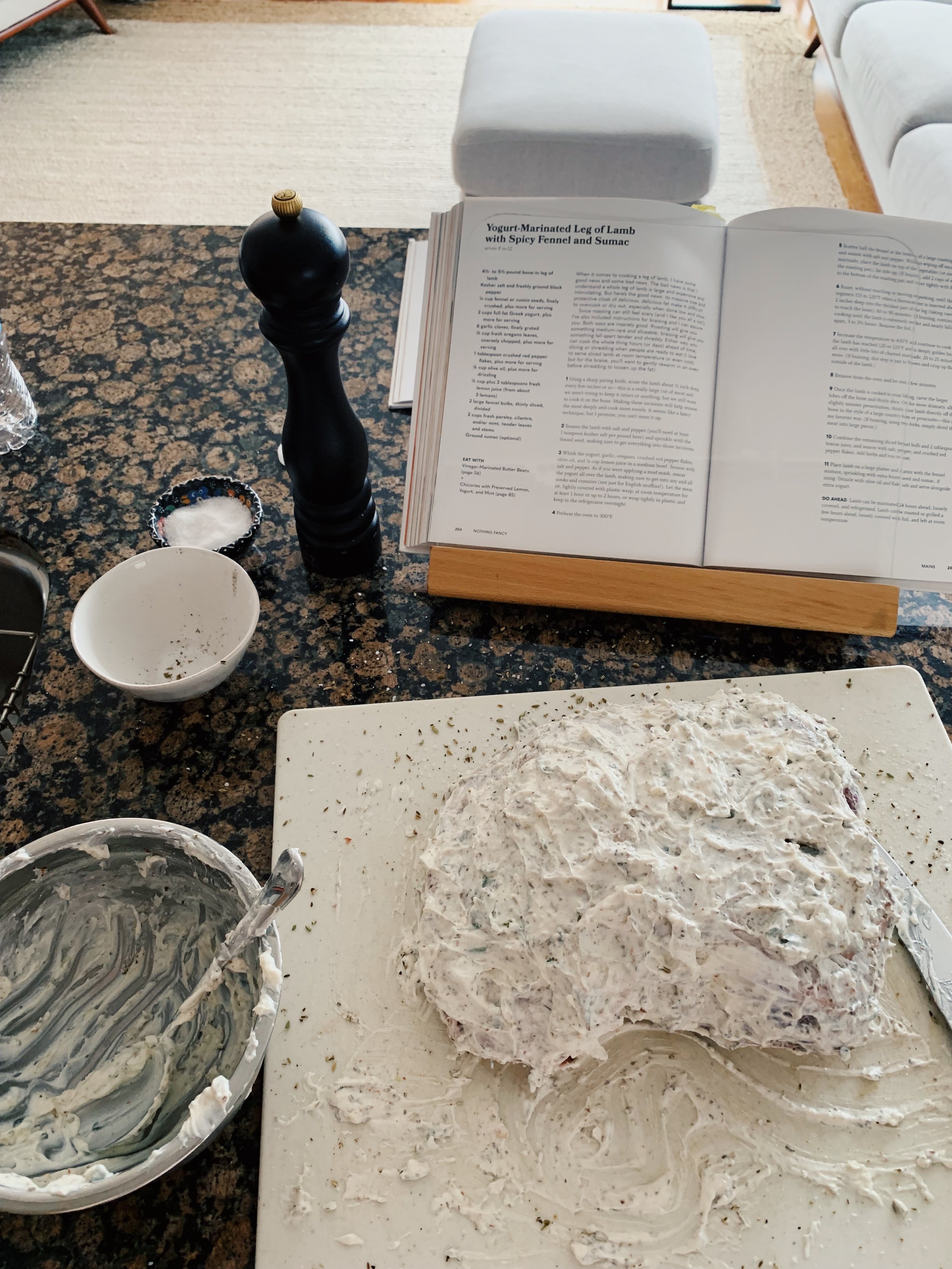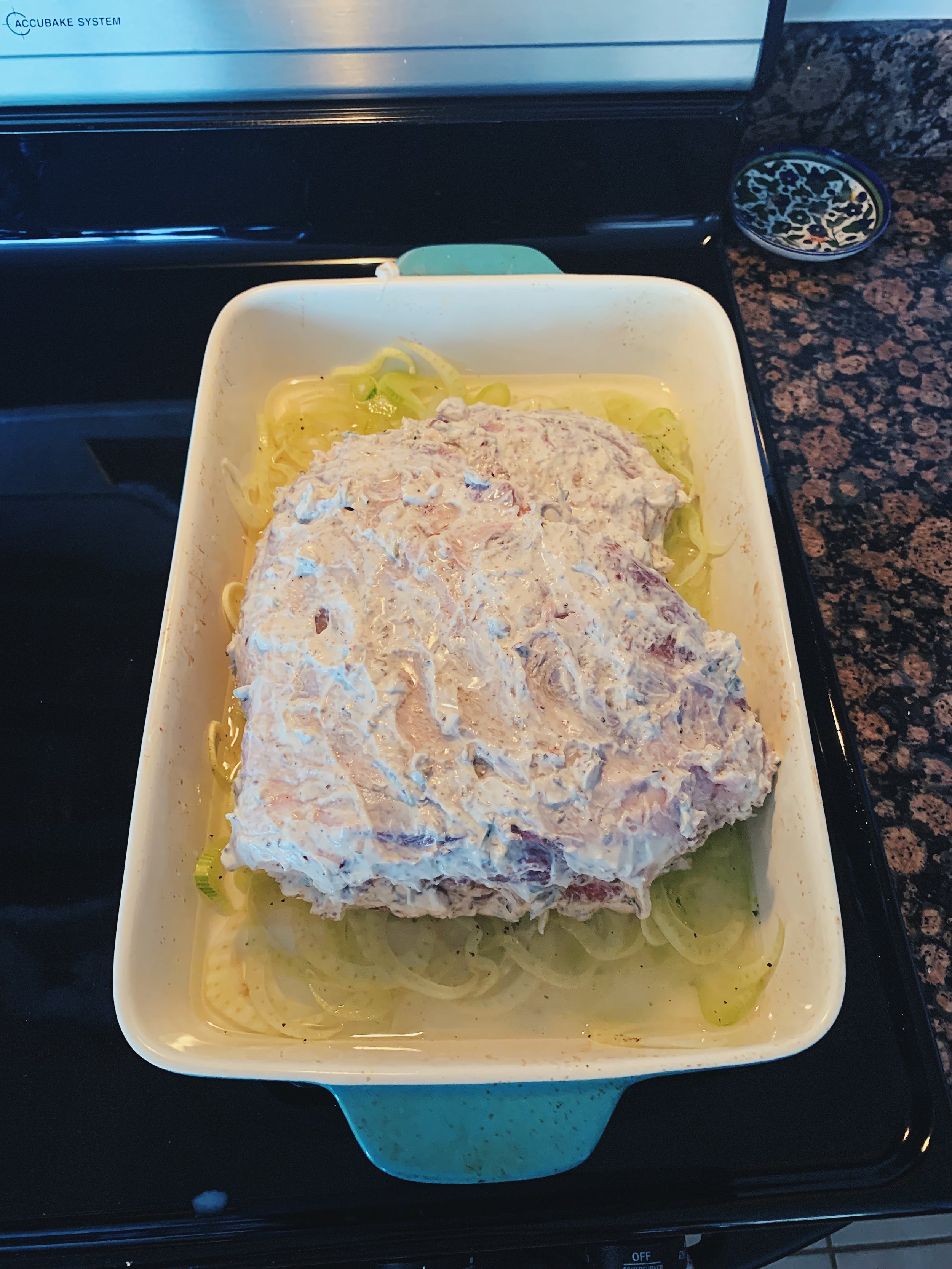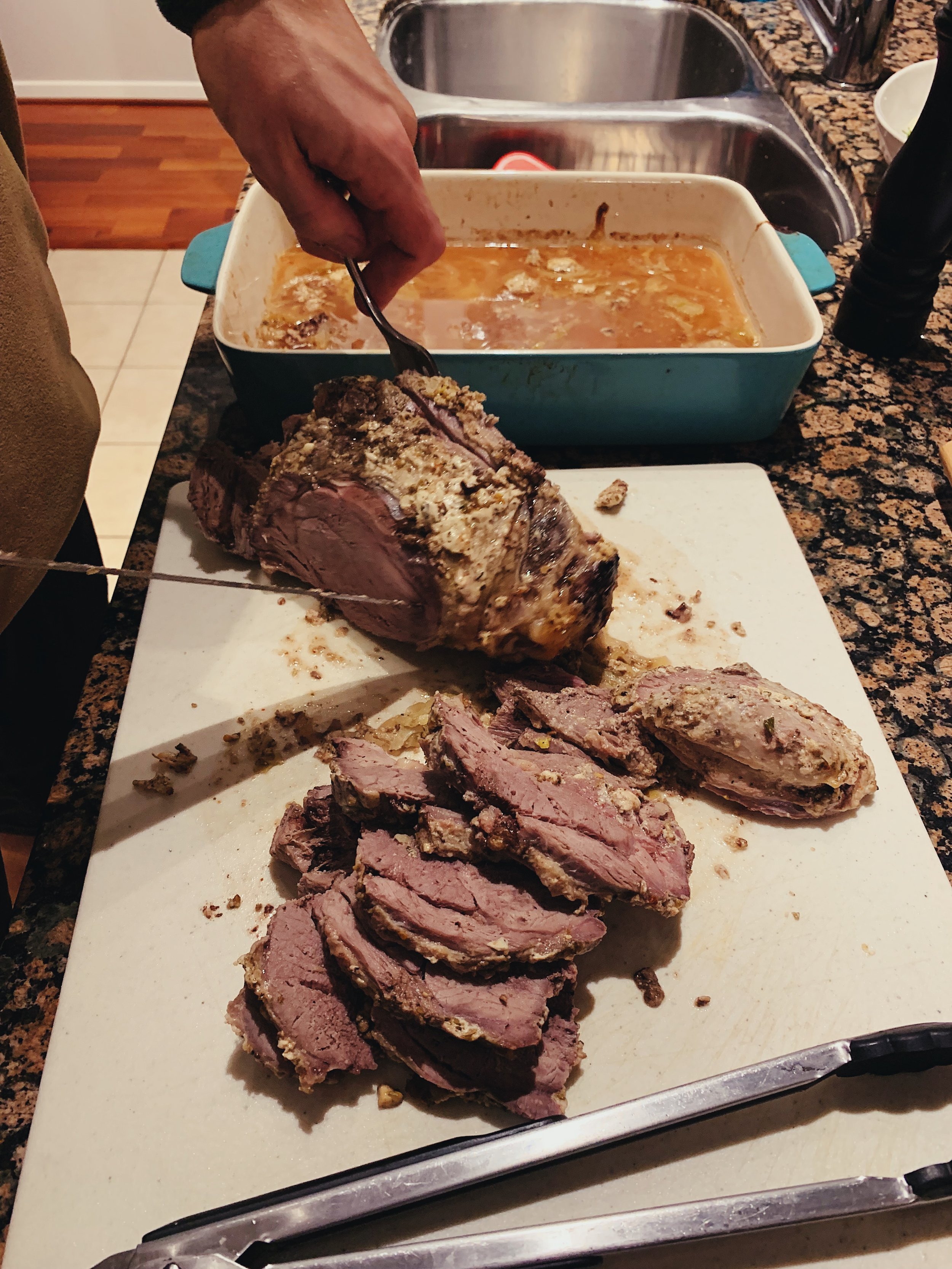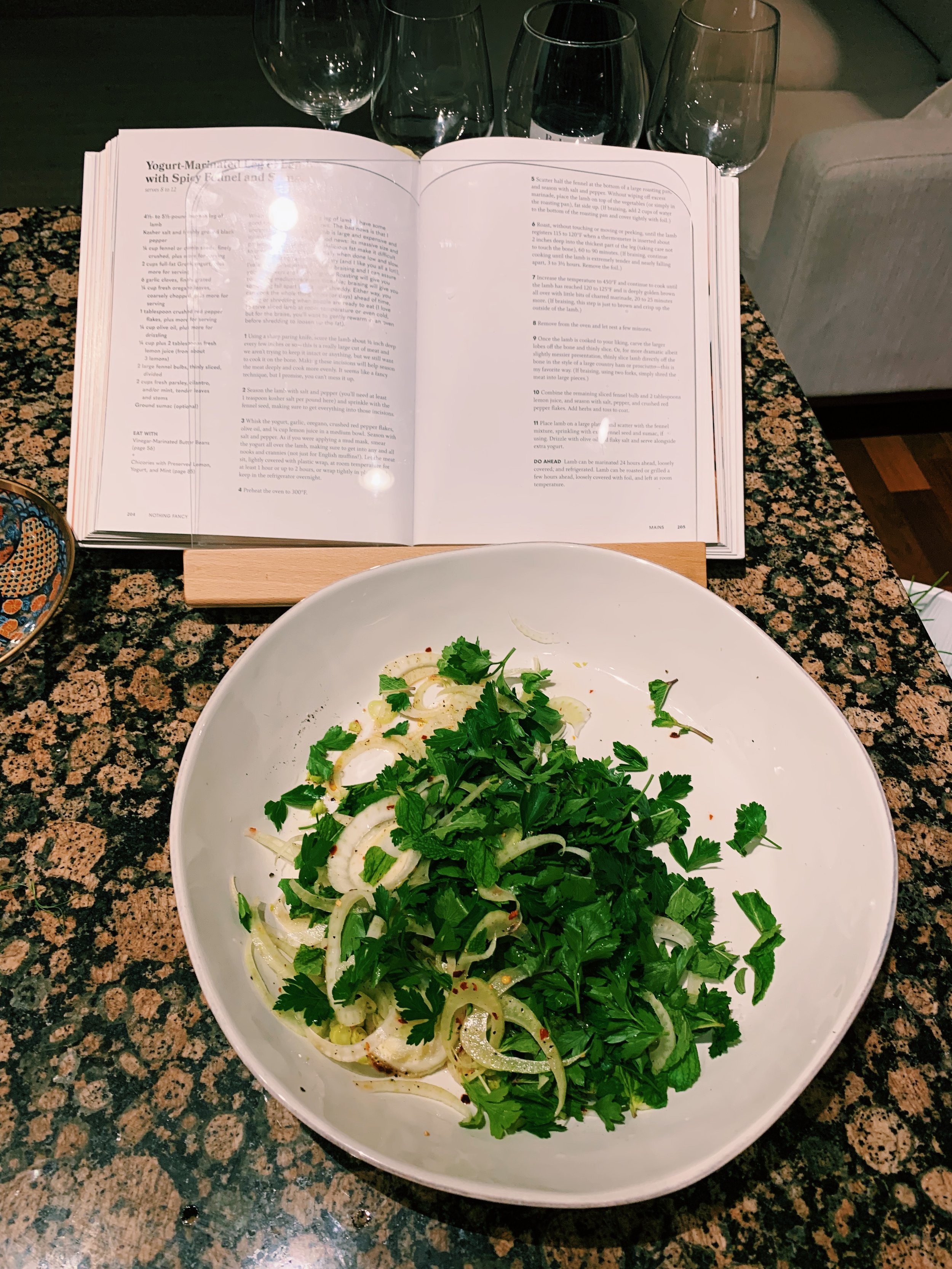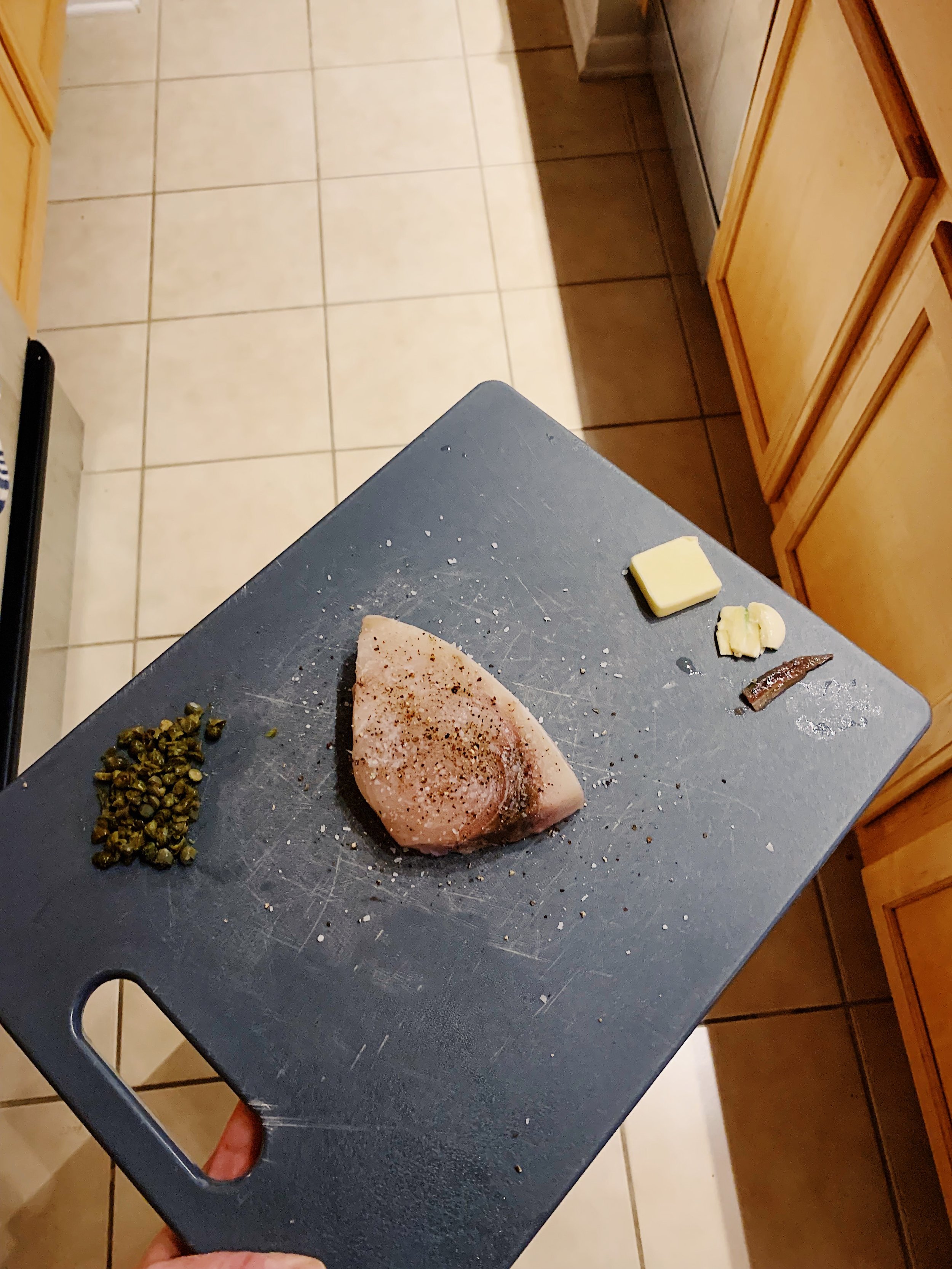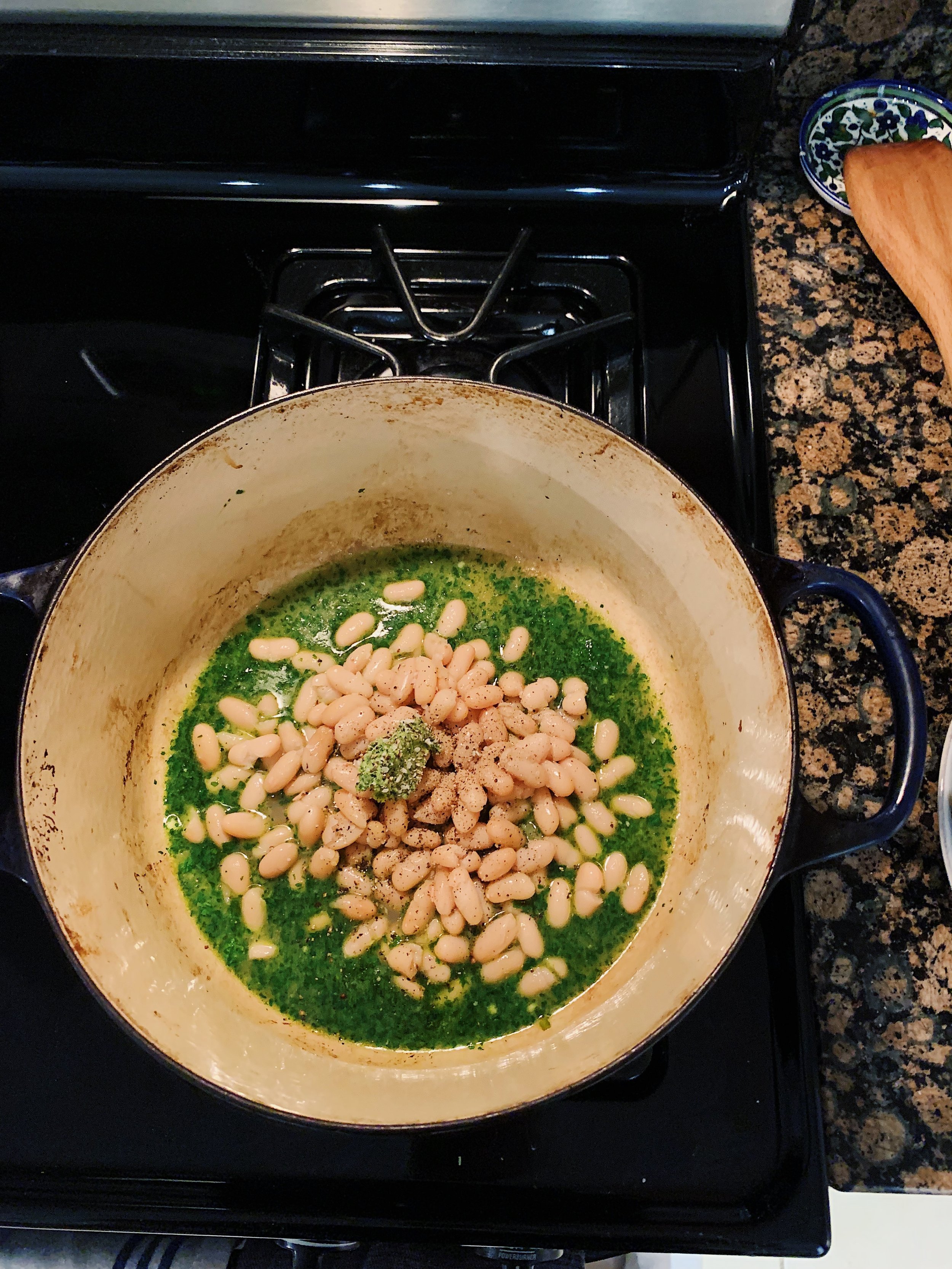“Are there any recipes you’re really not looking forward to making?” - at least 100 people
“Yeah, there’s this fish stew recipe with olives.” - me
(360 days later)
“Really, you’re gonna let a stew stand between you and accomplishing your goal? Suck it up.” - this project
“........................................... Fine.” - me
the makings of a good broth
If I sound like a broken record, I’m sorry. But I have to tell the truth! Once again, this stew was surprisingly better than I thought it would be. Will I make it again? Probably not. But at least I didn’t suffer while eating it. (If you’re new to the blog, please know that if you love seafood stew, you’ll probably love this — seafood stew just ain’t my thing.)
What I liked most was the tomato-based broth. I chose to use a ripe, medium-sized tomato instead of a can of diced tomatoes (Alison gives us the option). Fresh tomato was definitely the way to go. It gave a subtler tomato taste and color to the stew than canned would have, which I found to be just enough to brighten things up. The broth also contains toasted shallot rings and garlic slices, reduced white wine, chili flakes, bay leaves, and water. Just reading that ingredient list tells you it’s got to be a solid broth base.
The seafood part, now that’s where I falter. The recipe calls for cod (which we’ve established tastes too fishy), mussels (my first time buying my own mussels!), and shrimp (yes, more shrimp). Mussels are cooked first using the same method as you’d use with clams — nestling them in hot liquid and covering your pot with a lid to create steam. Within five or so minutes, those babies were opened. Cod and shrimp also need time to cook in the broth with the lid on, which took only another six minutes.
The olives and herbs really brought everything together. I opted for crushed Castelvetrano olives over black olives for their obviously superior flavor. Finely chopped parsley and dill added an element of freshness and vibrant color that really helped with appetite appeal. I made a half-recipe and ate about a fourth of it. Jordan had a few bites too, but we got no where near to finishing it.
As far as the recipe title goes, this recipe is relatively “quick” when it comes to stews, but it still takes a good bit of ingredient preparation and comes together in about 45 minutes. I guess it all depends on your definition of “quick.”
Thank God that’s over with.
220 recipes cooked, 5 to go.



